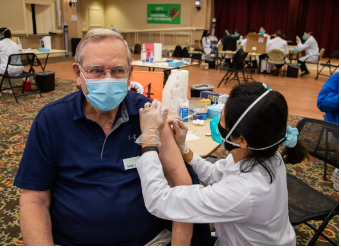
Funded by the Google News Initiative, in partnership with Northwestern University | Medill
The Data-Driven Reporting Project
News & Announcements
Check out the latest DDRP-supported published projects and announcements of our project here.
Announcements
Members of our first cohort won major journalism awards. Read more about it here.
Application submissions for Spring 2023 closed March 13. Applications for our Fall 2023 cohort open in September. Download the full application and learn more here.
In 2022, we funded 22 projects in the US and Canada with more than $930,000 USD. Learn more here.
Behind the Scenes
Lessons from a data project: Investigating Toronto’s multimillion-dollar program to improve road safety by Inori Roy on The Source by Open News
Poor record-keeping foiled our FOIA plans. Here’s what we learned through the simple, tedious process of creating data by hand.
Story recipe: U.S. schools restrain and seclude students thousands of times per school day—how often where you live? by Emilie Munson, Ying Zhao, and Matt Rocheleau on The Source by Open News. Here’s how to find the data and explore it, plus questions to ask in reporting the story for your community.
2022 Cohort Projects
Sovereign Justice by Underscore News
Portland, OR, USA • Oct. 18, 2022
Underscore began the publication of a year-long investigation into tribal law in Oregon, at a time when tribes are pushing for more court authority and stronger tribal sovereignty. The newsroom is procuring and analyzing documents from an array of sources, including state, federal and tribal court systems, as well as scholarly and government research reports.
The Deadly Inequality of Toronto’s Vision Zero Rollout by The Local
Toronto, ON, Canada | Oct. 22, 2022
This investigation analyzed city-wide speeding data and city council minutes, along with other documents/data obtained through Freedom of Information Act requests to look at the impact from a city-wide effort on road safety.
When schools use force by Hearst Newspapers
Albany, NY, USA | Oct. 27, 2022
This project used artificial intelligence and machine learning to turn unstructured data from thousands of documents on schools’ use of restraint on children into usable datasets.
Half Century Later, Question Remains: What Deputy Killed Two Students? by LSU Cold Case Project
Baton Rouge, LA, USA | October 30, 2022
This four-part narrative series commemorated the 50th anniversary of the deadly shooting of two unarmed black men at a protest at Southern University in November 1972. The news team analyzed 2,700 pages of FBI records and did dozens of interviews to recreate what happened and take readers deep inside the investigation to identify the shooter. This project prompted a public apology from the governor.
She planned to stay in her family home. Then Fulton County multiplied her tax bill by WABE
Atlanta, GA, USA | Nov. 3, 2022
Analyzing tax records and other public documents, this story looked at the disproportionate impact of tax policies on Black families in the area.
How rules written for distressed ‘Rust Belt’ property may benefit a select few by Eye on Ohio
Ohio, USA | Nov. 25, 2022
This project analyzed decisions on local property by county officials using artificial intelligence. The newsroom’s AI was previously developed and built its groundbreaking project on land banks. It is publicly available on GitHub.
Covid Year Two: After the Vaccine by Voice of San Diego
San Diego, CA, USA | Nov. 29, 2022
The newsroom created a database using local death certificates and demographic information to better understand who was most impacted by Covid.
Chicago air quality sensors show disparities across the city — and unexplained spikes in pollution by MuckRock
Chicago, IL, USA | Nov. 30, 2022
Analyzing exclusive data from Microsoft sensor data, and the teams’ own air quality sensors in disproportionate neighborhoods to identify inequalities in air quality across Chicago’s neighborhoods.
Big poultry in North Carolina by News&Observer and The Charlotte Observer.
Raleigh, NC, USA | Nov. 30, 2022
This project explored the impact of the state’s secretive billions-dollar poultry industry on residents, farmers and the environment by analyzing mapping files, data and more transparency in other states.
Questions?
Email questions to datadrivenreporting@northwestern.edu









